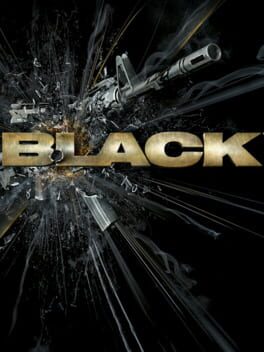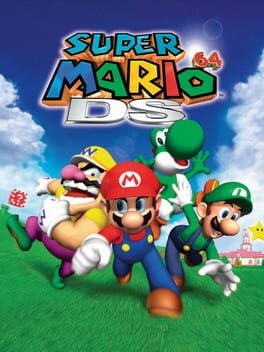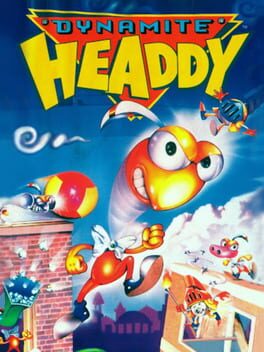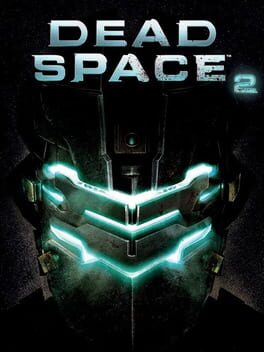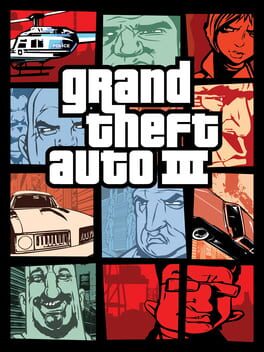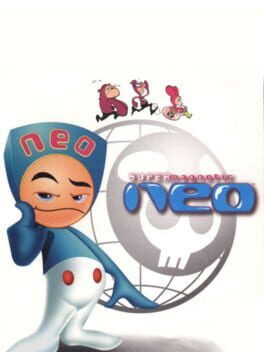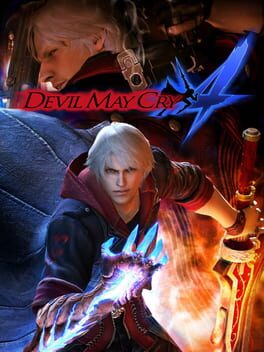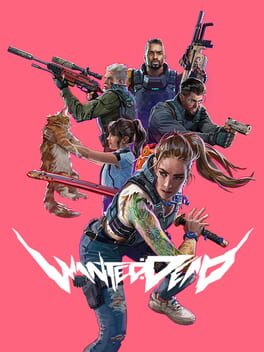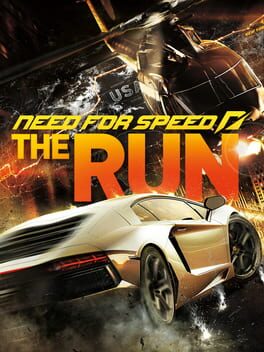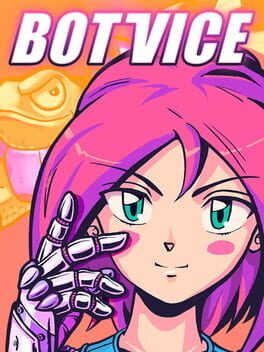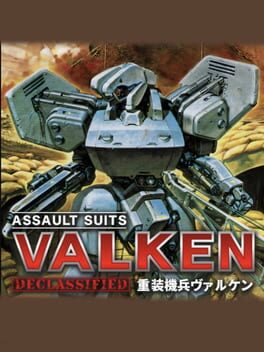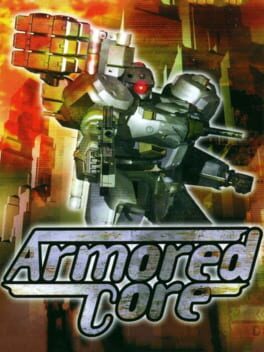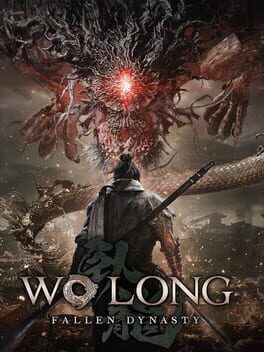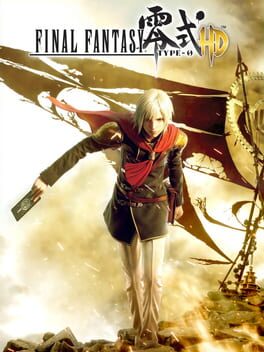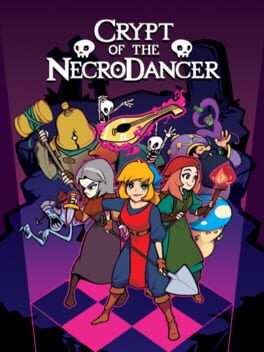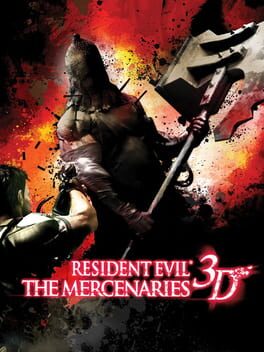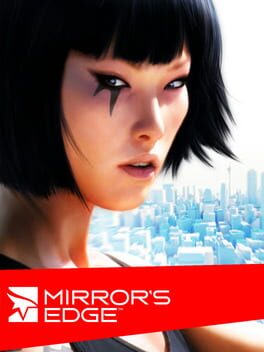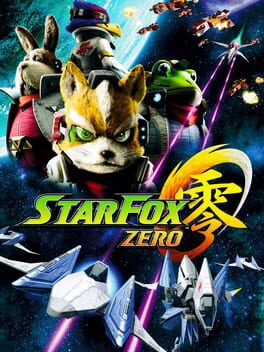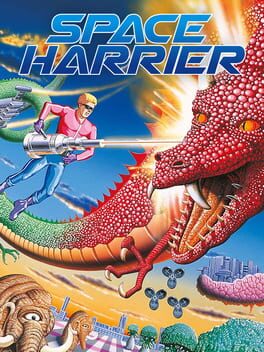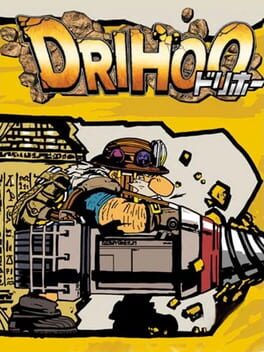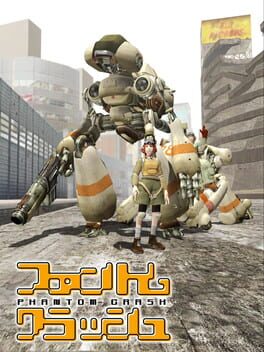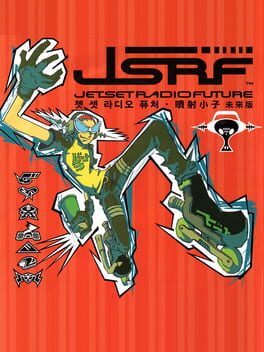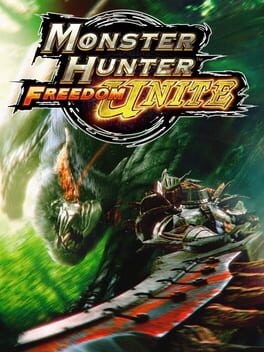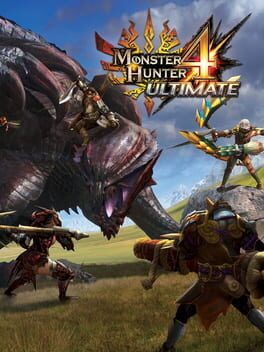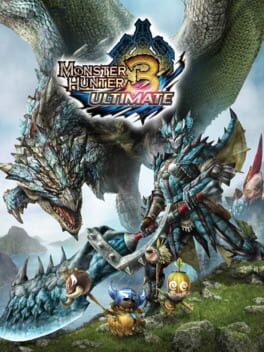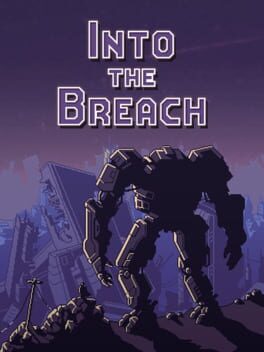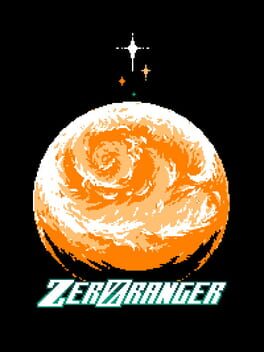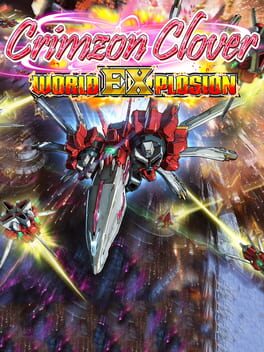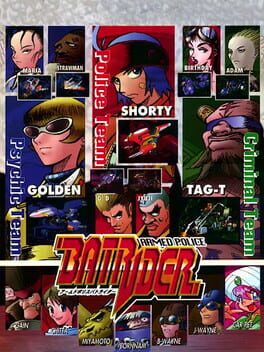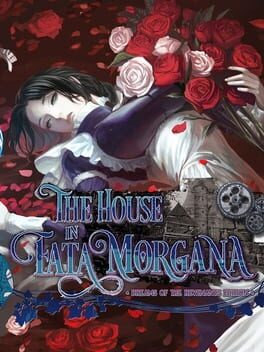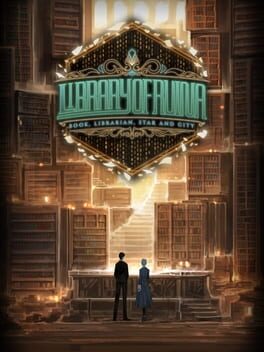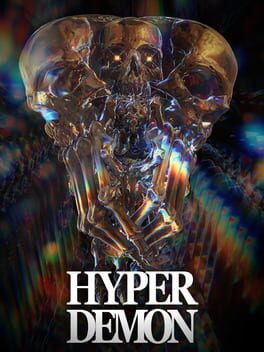wondermagenta
244 reviews liked by wondermagenta
Black
2006
Super Mario 64
1996
An experienced dev team's first foray into true 3D that, shockingly, gets it right all the way back in June 1996.
Absolutely rock-solid fundamentals which set the tone for the rest of the genre. Analog controls enable precise adjustment of angles which have huge downstream effects. A signature focus on momentum, combined with tricks both intentional and unintentional, birthed one of the most legendary and iconic speedrunning scenes of all time. Systems like this in a casual single player context, balanced to enhance rather than subvert challenges, are rare to find, and even the devs themselves never quite managed to recapture this particular flavor.
The level design here is emblematic of the early 3D era "golden age": enough detail and representation to evoke sense of place, but with the abstraction necessitated by the time's technology both facilitating dense layouts and imbuing the atmosphere with a surreal, dreamlike quality. No established formulas for success existed yet, so levels aren't overly concerned with providing the player a frictionless experience. Each expresses their own quirky character, something felt even more strongly than usual since gameplay is so contextualized by the precise placement of nearby geometry.
Shortcomings mainly occur in obtuse progression/secrets and a handful of stages (more concentrated in the latter half) that don't play to the game's strengths. Luckily, the huge modding scene has leveraged this fantastic foundation and learned from these mistakes to create a veritable cornucopia of visions, both vanilla-like and experimental, for you as a player to explore.
Yup, Quake is a pretty great game!
Absolutely rock-solid fundamentals which set the tone for the rest of the genre. Analog controls enable precise adjustment of angles which have huge downstream effects. A signature focus on momentum, combined with tricks both intentional and unintentional, birthed one of the most legendary and iconic speedrunning scenes of all time. Systems like this in a casual single player context, balanced to enhance rather than subvert challenges, are rare to find, and even the devs themselves never quite managed to recapture this particular flavor.
The level design here is emblematic of the early 3D era "golden age": enough detail and representation to evoke sense of place, but with the abstraction necessitated by the time's technology both facilitating dense layouts and imbuing the atmosphere with a surreal, dreamlike quality. No established formulas for success existed yet, so levels aren't overly concerned with providing the player a frictionless experience. Each expresses their own quirky character, something felt even more strongly than usual since gameplay is so contextualized by the precise placement of nearby geometry.
Shortcomings mainly occur in obtuse progression/secrets and a handful of stages (more concentrated in the latter half) that don't play to the game's strengths. Luckily, the huge modding scene has leveraged this fantastic foundation and learned from these mistakes to create a veritable cornucopia of visions, both vanilla-like and experimental, for you as a player to explore.
Yup, Quake is a pretty great game!
Really charming Indiana Jones-themed Doom total conversion, fighting through waves of Nazis and undead guardians in ruins around the world. Biggest surprise for me was the strength of the scenario design and pacing- fully expected to see everything the game had to offer by the end of the first episode, but there’s steady introduction of new enemies and weapons, alongside some nice breaks in the formula to keep things interesting. A definite highlight is the start of the Egypt episode, a dense shootout full of destructible props in a museum that’s far more open to exploration than the linear action of much of the rest of the game- and which also demonstrates how strong and varied the roster of hitscan enemies here are.
While I think Venturous is a little too conservative with it’s Doom II analogs, only rarely making you fight Revenant and Archvile equivalents- and usually at the end of episodes- having to prioritize heavy-machine gunners or grenadiers goes a long way in spicing up the action. The best trick it pulls that really capitalizes on this variety is ambushing you whenever you’ve just cleared out an area, foot soldiers pouring in right as you’ve gotten a handle on the undead hordes. It should get stale after a while, but the steady alternation and escalation of these threats more than carries the combat for the duration, bread-and-butter arena fights against monsters and more tactical shootouts against humans.
Ended up wrapping up a playthrough of the 1.3 release right as the newest update dropped, which includes an additional episode in Greece and generally fills out the game really nicely- with an extra visual pass and remixed level arrangements. One of my original criticisms was how weak the ending was, fighting a simplistic boss that you could circle-strafe around and lock down with machine gun fire, now traded out for one where you’re only armed with the magically-infused weapons, the boss now able to use attacks from the entirety of the enemy roster. I didn’t die on either encounter, and it still functionally boils down to circle-strafing it until you deplete its health bar, this newest version is unambiguously the fuller experience- and is a microcosm for the ways the game has been bolstered overall, visually sharper and more novel mechanically.
Even with all the positive changes, levels can still get kind of homogeneous by the end. You can only delve into lost tombs and ancient ruins so many times before it all starts to blur together- as unusual as it may sound from me, probably a sign that the game could’ve used some breaks from all the combat: a couple of gimmick levels, like some kind of teleporter puzzle or a proper labyrinth map could’ve gone a long way at selling the adventurer fantasy in a way combat tunnels just don’t provide (or really go for broke and make a besieged town built over some ruins as a hub area, similar to other shooters like Afterglow and Hedon).
Otherwise, amazing to see the jump in quality from the 1.3 to the 1.5 release- gave me the unusually good problem of having to throw out a bunch of my criticisms on the game, and the newly-included cliffhanger ending has me eager to see what this developer decides to tackle next.
While I think Venturous is a little too conservative with it’s Doom II analogs, only rarely making you fight Revenant and Archvile equivalents- and usually at the end of episodes- having to prioritize heavy-machine gunners or grenadiers goes a long way in spicing up the action. The best trick it pulls that really capitalizes on this variety is ambushing you whenever you’ve just cleared out an area, foot soldiers pouring in right as you’ve gotten a handle on the undead hordes. It should get stale after a while, but the steady alternation and escalation of these threats more than carries the combat for the duration, bread-and-butter arena fights against monsters and more tactical shootouts against humans.
Ended up wrapping up a playthrough of the 1.3 release right as the newest update dropped, which includes an additional episode in Greece and generally fills out the game really nicely- with an extra visual pass and remixed level arrangements. One of my original criticisms was how weak the ending was, fighting a simplistic boss that you could circle-strafe around and lock down with machine gun fire, now traded out for one where you’re only armed with the magically-infused weapons, the boss now able to use attacks from the entirety of the enemy roster. I didn’t die on either encounter, and it still functionally boils down to circle-strafing it until you deplete its health bar, this newest version is unambiguously the fuller experience- and is a microcosm for the ways the game has been bolstered overall, visually sharper and more novel mechanically.
Even with all the positive changes, levels can still get kind of homogeneous by the end. You can only delve into lost tombs and ancient ruins so many times before it all starts to blur together- as unusual as it may sound from me, probably a sign that the game could’ve used some breaks from all the combat: a couple of gimmick levels, like some kind of teleporter puzzle or a proper labyrinth map could’ve gone a long way at selling the adventurer fantasy in a way combat tunnels just don’t provide (or really go for broke and make a besieged town built over some ruins as a hub area, similar to other shooters like Afterglow and Hedon).
Otherwise, amazing to see the jump in quality from the 1.3 to the 1.5 release- gave me the unusually good problem of having to throw out a bunch of my criticisms on the game, and the newly-included cliffhanger ending has me eager to see what this developer decides to tackle next.
Super Mario 64 DS
2004
nintendo salvaging the american gaming market with the release of the NES was the modern inflection point for our industry, in some ways that are less obvious than others. the console enshrined gaming as a medium with legitimacy beyond the original fad-like relevance of the atari VCS, but the centralization of this success around nintendo gave the company an uncomfortable amount of leverage. this immediately portended poorly with the simultaneous release of the console's killer app: super mario bros., which gestured to a sinister rejection of the console's original intent. look to the japanese launch line-up and you'll see arcade staples such as donkey kong and popeye; games that lauded precise, restricted play with definitive rules and short runtimes. super mario bros. was a refutation of this design philosophy in favor of the loosey-goosey variable jump heights, frequent health restoration items, and long hallways of copy-paste content replacing the tightly paced experiences that defined the era before. the NES still featured arguably the greatest console expressions of the rigorous arcade action experiences that defined the '80s - castlevania, ninja gaiden, and the early mega mans all come to mind - but the seeds super mario bros. planted would presage a shift into more and more experiences that coddled the player rather than testing their fortitude. in some ways, super mario bros. lit the match that would leave our gaming landscape in the smoldering ruins of the AAA design philosophy.
the '90s only deepened nintendo's exploration of trends that would further attempt to curb the arcade philosophy, which still floated on thanks to the valiant efforts of their competitors at sega, capcom, konami, and others. super mario world kicked off nintendo's 16-bit era with an explicitly non-linear world map that favored the illusion of charting unknown lands over the concrete reality of learning play fundamentals, and its pseudo-sequel yoshi's island would further de-emphasize actual platforming chops by giving the player a generous hover and grading them on their ability to pixel hunt for collectables rather than play well, but the most stunning example of nintendo's decadence in this era is undoubtedly donkey kong '94. the original donkey kong had four levels tightly wound around a fixed jump arc and limited ability for mario to deal with obstacles; its ostensible "remake" shat all over its legacy by infusing mario's toolkit with such ridiculous pablum such as exaggerated flip jumps, handstands, and other such acrobatics. by this point nintendo was engaging in blatant historical revisionism, turning this cornerstone of the genre into a bug-eyed circus romp, stuffed with dozens of new puzzle-centric levels that completely jettisoned any semblance of toolkit-oriented level design from the original game. and yet, this was the final fissure before the dam fully burst in 1996.
with the release of the nintendo 64 came the death knell of the industry: the analog stick. nintendo's most cunning engineers and depraved designers had cooked up a new way to hand unprecedented control to the player and tear down all obstacles standing in the way of the paternalistic head-pat of a "job well done" that came with finishing a game. with it also came this demonic interloper's physical vessel, super mario 64; the refined, sneering coalescence of all of nintendo's design tendencies up to this point. see here a game with enormous, previously unfathomable player expression, with virtually every objective solvable in myriad different ways to accommodate those who refuse to engage with the essential challenges the game offers. too lazy to even attempt some challenges at all? feel free to skip over a third of the game's "star" objectives on your way to the final boss; you can almost see the designers snickering as they copy-pasted objectives left and right, knowing that the majority of their player base would never even catch them in the act due to their zombie-like waddle to the atrociously easy finish line. even as arcade games stood proud at the apex of the early 3D era, super mario 64 pulled the ground out underneath them, leaving millions of gamers flocking to similar experiences bereft of the true game design fundamentals that had existed since the origination of the medium.
this context is long but hopefully sobering to you, the reader, likely a gamer so inoculated by the drip-feed of modern AAA slop that you likely have regarded super mario 64 as a milestone in 3D design up to now. yet, it also serves as a stark contrast to super mario 64 ds, a revelation and admission of guilt by nintendo a decade after their donkey kong remake plunged modern platformers into oblivion.
the d-pad alone is cool water against the brow of one in the throes of a desert of permissive design techniques. tightening up the input space from the shallow dazzle of an analog surface to the limitations of eight directions instantly reframes the way one looks at the open environments of the original super mario 64. sure, there's a touch screen option, but the awkward translation of a stick to the literal flat surface of the screen seems to be intentionally hobbled in order to encourage use of the d-pad. while moving in a straight line may still be simple, any sort of other action now begets a pause for reflection over the exact way one should proceed. is the sharp 45 or 90 degree turn to one side "good enough", or will I need to make a camera adjustment in-place? for this bridge, what combination of angles should I concoct in order to work through this section? the removal of analog control also forces the addition of an extra button to differentiate between running and walking, slapping the player on the wrist if they try to gently segue between the two states as in the original. the precision rewards those who aim to learn their way around the rapid shifts in speed while punishing those who hope they can squeak by with the same sloppy handling that the original game allowed.
on its own this change is crucial, but it still doesn't cure the ills of the original's permissive objective structure. however, the remake wisely adds a new character selection system that subtly injects routing fundamentals into the game's core. for starters: each of the characters has a separate moveset, and while some characters such as yoshi and luigi regrettably have the floaty hover and scuttle that I disdained in yoshi's island, it's at least balanced here by removing other key aspects of their kit such as wall jumps and punches. the addition of wario gives the game a proper "hard mode," with wario's lumbering speed and poor jump characteristics putting much-needed limiters on the game's handling. for objectives that now explicitly require wario to complete, the game is effectively barring you from abusing the superior movement of the original game by forcing you into a much more limited toolkit with rigid d-pad controls, the kind of limitations this game absolutely needed in order to shine.
that last point about objectives that specifically require a given character is key: the remake segments its objectives based on which characters are viable to use to complete them. however, while in some cases the game may telegraph which specific characters are required for a particular task, in many cases the "correct" solution is actually to bounce between the characters in real time. this is done by strategically placing hats for each of the characters throughout the map - some attached to enemies and some free-floating - which allow the player to switch on the fly. this adds new detours to the otherwise simple objectives that vastly increases their complexity: which toolkit is best suited for which part of each mission? how should my route be planned around the level to accommodate hats I need to pick up? will I be able to defeat an enemy that's guarding the hat if I had to? this decision-making fleshes out what was previously a mindless experience.
there's one additional element to this system that truly elevates it to something resembling the arcade experiences of yore. while you can enter a level as any character, entering as yoshi allows you to preemptively don the cap of any other character as you spawn in, preventing the player from having to back-track to switch characters. on the surface this seems like another ill-advised QoL feature, but some subtle features reveal something more fascinating. yoshi has no cap associated with him, so to play as him, one must enter the level with him. however, you often need to switch to another character in the middle of a level. how do you switch back? by taking damage. to solve the ridiculously overstuffed eight piece health bar of the original, this remake transforms it into a resource you expend in order to undergo transformation. sure, one could theoretically collect coins in order to replenish this resource, but this adds a new layer onto the routing that simply didn't exist in the original game, where there were so many ways to circumvent obstacles with the permissive controls that getting hit in the first place was often harder than completing the objective. by reframing the way that the player looks at their heath gauge, the game is calling to mind classic beat 'em ups, where the health gauge often doubled as a resource to expend for powerful AoE supers.
the game still suffers from much of the rotten design at the core of its forebear; these above changes are phenomenal additions, but they're grafted onto a framework that's crumbling as you delve into it. regardless, the effort is admirable. for a brief moment, nintendo offered an apology to all of those hurt by their curbstomping of the design philosophies that springboarded them into juggernaut status in the first place, and they revitalized classic design perspectives for many millions more who first entered the world of gaming after it had already been tainted by nintendo's misdeeds. the galaxy duology, released a few years after this game, attempted to rework the series from the ground up with a new appreciation for arcade design by limiting the bloated toolkit of previous games and linearizing levels, but the damage had already been done. the modern switch era has magnified nintendo's worst tendencies, putting proper execution and mechanical comprehension to the wayside as they accelerate the disturbing "the player is always right" principles that have infested their games since that original super mario bros. by looking at super mario 64 ds in this context, we at least get a glimpse of what a better world could have looked like had nintendo listened to their elders all along.
the '90s only deepened nintendo's exploration of trends that would further attempt to curb the arcade philosophy, which still floated on thanks to the valiant efforts of their competitors at sega, capcom, konami, and others. super mario world kicked off nintendo's 16-bit era with an explicitly non-linear world map that favored the illusion of charting unknown lands over the concrete reality of learning play fundamentals, and its pseudo-sequel yoshi's island would further de-emphasize actual platforming chops by giving the player a generous hover and grading them on their ability to pixel hunt for collectables rather than play well, but the most stunning example of nintendo's decadence in this era is undoubtedly donkey kong '94. the original donkey kong had four levels tightly wound around a fixed jump arc and limited ability for mario to deal with obstacles; its ostensible "remake" shat all over its legacy by infusing mario's toolkit with such ridiculous pablum such as exaggerated flip jumps, handstands, and other such acrobatics. by this point nintendo was engaging in blatant historical revisionism, turning this cornerstone of the genre into a bug-eyed circus romp, stuffed with dozens of new puzzle-centric levels that completely jettisoned any semblance of toolkit-oriented level design from the original game. and yet, this was the final fissure before the dam fully burst in 1996.
with the release of the nintendo 64 came the death knell of the industry: the analog stick. nintendo's most cunning engineers and depraved designers had cooked up a new way to hand unprecedented control to the player and tear down all obstacles standing in the way of the paternalistic head-pat of a "job well done" that came with finishing a game. with it also came this demonic interloper's physical vessel, super mario 64; the refined, sneering coalescence of all of nintendo's design tendencies up to this point. see here a game with enormous, previously unfathomable player expression, with virtually every objective solvable in myriad different ways to accommodate those who refuse to engage with the essential challenges the game offers. too lazy to even attempt some challenges at all? feel free to skip over a third of the game's "star" objectives on your way to the final boss; you can almost see the designers snickering as they copy-pasted objectives left and right, knowing that the majority of their player base would never even catch them in the act due to their zombie-like waddle to the atrociously easy finish line. even as arcade games stood proud at the apex of the early 3D era, super mario 64 pulled the ground out underneath them, leaving millions of gamers flocking to similar experiences bereft of the true game design fundamentals that had existed since the origination of the medium.
this context is long but hopefully sobering to you, the reader, likely a gamer so inoculated by the drip-feed of modern AAA slop that you likely have regarded super mario 64 as a milestone in 3D design up to now. yet, it also serves as a stark contrast to super mario 64 ds, a revelation and admission of guilt by nintendo a decade after their donkey kong remake plunged modern platformers into oblivion.
the d-pad alone is cool water against the brow of one in the throes of a desert of permissive design techniques. tightening up the input space from the shallow dazzle of an analog surface to the limitations of eight directions instantly reframes the way one looks at the open environments of the original super mario 64. sure, there's a touch screen option, but the awkward translation of a stick to the literal flat surface of the screen seems to be intentionally hobbled in order to encourage use of the d-pad. while moving in a straight line may still be simple, any sort of other action now begets a pause for reflection over the exact way one should proceed. is the sharp 45 or 90 degree turn to one side "good enough", or will I need to make a camera adjustment in-place? for this bridge, what combination of angles should I concoct in order to work through this section? the removal of analog control also forces the addition of an extra button to differentiate between running and walking, slapping the player on the wrist if they try to gently segue between the two states as in the original. the precision rewards those who aim to learn their way around the rapid shifts in speed while punishing those who hope they can squeak by with the same sloppy handling that the original game allowed.
on its own this change is crucial, but it still doesn't cure the ills of the original's permissive objective structure. however, the remake wisely adds a new character selection system that subtly injects routing fundamentals into the game's core. for starters: each of the characters has a separate moveset, and while some characters such as yoshi and luigi regrettably have the floaty hover and scuttle that I disdained in yoshi's island, it's at least balanced here by removing other key aspects of their kit such as wall jumps and punches. the addition of wario gives the game a proper "hard mode," with wario's lumbering speed and poor jump characteristics putting much-needed limiters on the game's handling. for objectives that now explicitly require wario to complete, the game is effectively barring you from abusing the superior movement of the original game by forcing you into a much more limited toolkit with rigid d-pad controls, the kind of limitations this game absolutely needed in order to shine.
that last point about objectives that specifically require a given character is key: the remake segments its objectives based on which characters are viable to use to complete them. however, while in some cases the game may telegraph which specific characters are required for a particular task, in many cases the "correct" solution is actually to bounce between the characters in real time. this is done by strategically placing hats for each of the characters throughout the map - some attached to enemies and some free-floating - which allow the player to switch on the fly. this adds new detours to the otherwise simple objectives that vastly increases their complexity: which toolkit is best suited for which part of each mission? how should my route be planned around the level to accommodate hats I need to pick up? will I be able to defeat an enemy that's guarding the hat if I had to? this decision-making fleshes out what was previously a mindless experience.
there's one additional element to this system that truly elevates it to something resembling the arcade experiences of yore. while you can enter a level as any character, entering as yoshi allows you to preemptively don the cap of any other character as you spawn in, preventing the player from having to back-track to switch characters. on the surface this seems like another ill-advised QoL feature, but some subtle features reveal something more fascinating. yoshi has no cap associated with him, so to play as him, one must enter the level with him. however, you often need to switch to another character in the middle of a level. how do you switch back? by taking damage. to solve the ridiculously overstuffed eight piece health bar of the original, this remake transforms it into a resource you expend in order to undergo transformation. sure, one could theoretically collect coins in order to replenish this resource, but this adds a new layer onto the routing that simply didn't exist in the original game, where there were so many ways to circumvent obstacles with the permissive controls that getting hit in the first place was often harder than completing the objective. by reframing the way that the player looks at their heath gauge, the game is calling to mind classic beat 'em ups, where the health gauge often doubled as a resource to expend for powerful AoE supers.
the game still suffers from much of the rotten design at the core of its forebear; these above changes are phenomenal additions, but they're grafted onto a framework that's crumbling as you delve into it. regardless, the effort is admirable. for a brief moment, nintendo offered an apology to all of those hurt by their curbstomping of the design philosophies that springboarded them into juggernaut status in the first place, and they revitalized classic design perspectives for many millions more who first entered the world of gaming after it had already been tainted by nintendo's misdeeds. the galaxy duology, released a few years after this game, attempted to rework the series from the ground up with a new appreciation for arcade design by limiting the bloated toolkit of previous games and linearizing levels, but the damage had already been done. the modern switch era has magnified nintendo's worst tendencies, putting proper execution and mechanical comprehension to the wayside as they accelerate the disturbing "the player is always right" principles that have infested their games since that original super mario bros. by looking at super mario 64 ds in this context, we at least get a glimpse of what a better world could have looked like had nintendo listened to their elders all along.
Dynamite Headdy
1994
I've got real admiration for the theatrical trappings, with panels falling off the back wall and gyrating stagehands gussying up the set as you stroll through, but I think coming back to this style of gameplay doesn't hit the same for me anymore. the treasure hyperfocus on impressive boss fights is here without the richer mechanics of gunstar heroes or alien soldier, leaving much stricter scenarios where the player has less leverage over the proceedings. it's heavily setpiece-driven and thus built upon cracking open whatever essential strategy solves each individual encounter rather than learning particular mechanics over the course of the game. a good example would be izayoi, who has a rapid arm extension attack that aims for your head, so if you throw your head above you right when she starts tracking, you can repeatedly have her whiff and then bop her in the face when she briefly exposes it afterwards. that's a cool little extension of the game's primary mechanic (you can throw your head in any direction), but once you lock it in the repetition of her behavior pattern and her cyclically available weak point make the fight rather static.
not sure what to think of the different abilities you can get with various heads throughout either. theoretically I could've enjoyed having them woven in through enemies or something else organic a la kirby, but having the abilities just sitting out in the open right where you need them feels a bit raw. it's especially apparent given how few there are that alter mobility or do anything other than make combat easier; perhaps a bit of tunnel vision on the developer's part, even though you can tell they attempted some actual level design here. you may get a sequence with some wall-climbing thanks to the spiky head ability, but these segments boil down just to "scale the wall with the powerup" without many complicating factors thrown in aside from a late-game segment where you use it to stall on the ceiling and avoid rocket trains zooming by. the way that abilities are applied in the boss fights also fall into a narrow paradigm, with more than a few bosses having abilities sitting around that effectively shut them off: time stop in multiple fights, both a bomb with crazy damage and invincibility in the aforementioned izayoi fight, and the hammer in both rever face and the final boss fight. really something where some sort of trade-off regarding grabbing the ability would've made more sense; the developers settled instead of interleaving junk abilities in the rotating ability selection that will inevitably cause you to eat a lot of damage until they wear off.
not sure what to think of the different abilities you can get with various heads throughout either. theoretically I could've enjoyed having them woven in through enemies or something else organic a la kirby, but having the abilities just sitting out in the open right where you need them feels a bit raw. it's especially apparent given how few there are that alter mobility or do anything other than make combat easier; perhaps a bit of tunnel vision on the developer's part, even though you can tell they attempted some actual level design here. you may get a sequence with some wall-climbing thanks to the spiky head ability, but these segments boil down just to "scale the wall with the powerup" without many complicating factors thrown in aside from a late-game segment where you use it to stall on the ceiling and avoid rocket trains zooming by. the way that abilities are applied in the boss fights also fall into a narrow paradigm, with more than a few bosses having abilities sitting around that effectively shut them off: time stop in multiple fights, both a bomb with crazy damage and invincibility in the aforementioned izayoi fight, and the hammer in both rever face and the final boss fight. really something where some sort of trade-off regarding grabbing the ability would've made more sense; the developers settled instead of interleaving junk abilities in the rotating ability selection that will inevitably cause you to eat a lot of damage until they wear off.
Dead Space 2
2011
When I was younger, I thought Dead Space 2 was the usual case of a horror game starting incredibly strong and then weakly limping to the finish, but this most recent playthrough has totally inverted my opinion; while the first half gets all the nicest areas and flashiest setpieces, it’s the second half, where you’re funneled through the metal guts of the station, that the encounters start to pick up, with a wider range of enemies to deal with and a playful sense of meanness to the combat design- like a memorable room where the game spawns an explosive enemy right next to a breakable window that’ll send you out into the vacuum of space if you so much as touch it. The final section is amazing as well, chased by a regenerating necromorph that gets the best use out of your busted kit out of all the challenges in the game, forced to push through hordes of enemies while this unstoppable enemy is constantly shadowing you.
But all this should be couched in the fact that many of its best moments here hover around the opening 30 minutes of RE4- you’ll be really lucky if you’re fighting multiple waves of enemies or have to make meaningful decisions of who to prioritize first in combat, the designers seemingly all too comfortable to throw the standard melee and acid-spitting necromorphs at you and a haphazard assortment of the other enemy types as a little bit of flavor. Some of this flattening is due to how powerful your Stasis ability is: because so many of the encounters take place in this tiny corridors and cramped hallways, it’s really easy to negate the threat of an ambush or poor positioning by freezing an enemy and dismembering them with little thought on your part, aided by how generous the game is with dropping stasis packs and doling out recharge stations. It’s something especially felt with the Stalker enemies, a standout addition deemed so important that they get their own dedicated rooms, but they end up being some of the simplest in practice- boiling down to hunkering in a corner and waiting for them to run at you, a cool enemy type that feels unfinished when fought on their own. (The fact that you never fight these guys while dealing with your O2 meter is a massive shame, something that might’ve curbed how easy it is to passively engage them.)
Maybe the most damning thing here is that the weightlessness of the new additions to the bestiary highlight just how well-considered the original’s enemies were, testing you on the applications of the dismemberment system and on third-person shooting in a way none of the new creatures do- the frantic, vertical movement of the scorpion-like Leapers or the surgical precision demanded for the Pregnant necromorphs, diluted here with a lot of stuff that swarms you and that can be beaten out more simply with direct damage. A lot of the discussion about the two games centers on the weakening of the survival horror elements from the first entry to the second, but I think this less defined mechanical identity is probably the bigger loss for the series.
Still, a hard game for me to really dislike- nails the feedback for combat (even reloading looks cool!) and I’m not sure if another game has had a better justification and visualization for the combat tunnel/amazing skybox/combat tunnel structure than working your way through the various sectors of a dystopian mining station. Was ultimately reminded a lot of my time going through Titanfall 2 a few years ago, a strong string of setpieces and a great-feeling avatar not able to shake the feeling that the encounter design never really pushed the mechanics far enough.
Extra thoughts:
- Played through the game on Zealot, and got about halfway through on the limited-save Hardcore difficulty before losing a couple of hours of progress when I clipped through the floor of a tram and opted to call it there. Otherwise, I think these are pretty admirable difficulty modes, the increased lethality and reduced ammo of the former and the endurance needed for the latter do a nice job at recontextualizing the game. Granular bits of optimization, like being able to use random kinesis objects to slowly bludgeon enemies to death and getting a free refill on ammo and health when you upgrade their capacity, turn into run-saving maneuvers when you're under so much pressure. Good stuff.
- The Severed DLC is slightly more respectable than I remembered- the stasis enemies from Dead Space 1 aren’t a super-noticeable addition, but going backwards through old areas is far less egregious than it sounds, both due to some nice enemy arrangements (probably has the best Stalker encounter in the game) and for the fact that the player character comes with a predefined loadout that might get you to see a different side of the arsenal. Would never have used the Seeker rifle otherwise, for instance.
But all this should be couched in the fact that many of its best moments here hover around the opening 30 minutes of RE4- you’ll be really lucky if you’re fighting multiple waves of enemies or have to make meaningful decisions of who to prioritize first in combat, the designers seemingly all too comfortable to throw the standard melee and acid-spitting necromorphs at you and a haphazard assortment of the other enemy types as a little bit of flavor. Some of this flattening is due to how powerful your Stasis ability is: because so many of the encounters take place in this tiny corridors and cramped hallways, it’s really easy to negate the threat of an ambush or poor positioning by freezing an enemy and dismembering them with little thought on your part, aided by how generous the game is with dropping stasis packs and doling out recharge stations. It’s something especially felt with the Stalker enemies, a standout addition deemed so important that they get their own dedicated rooms, but they end up being some of the simplest in practice- boiling down to hunkering in a corner and waiting for them to run at you, a cool enemy type that feels unfinished when fought on their own. (The fact that you never fight these guys while dealing with your O2 meter is a massive shame, something that might’ve curbed how easy it is to passively engage them.)
Maybe the most damning thing here is that the weightlessness of the new additions to the bestiary highlight just how well-considered the original’s enemies were, testing you on the applications of the dismemberment system and on third-person shooting in a way none of the new creatures do- the frantic, vertical movement of the scorpion-like Leapers or the surgical precision demanded for the Pregnant necromorphs, diluted here with a lot of stuff that swarms you and that can be beaten out more simply with direct damage. A lot of the discussion about the two games centers on the weakening of the survival horror elements from the first entry to the second, but I think this less defined mechanical identity is probably the bigger loss for the series.
Still, a hard game for me to really dislike- nails the feedback for combat (even reloading looks cool!) and I’m not sure if another game has had a better justification and visualization for the combat tunnel/amazing skybox/combat tunnel structure than working your way through the various sectors of a dystopian mining station. Was ultimately reminded a lot of my time going through Titanfall 2 a few years ago, a strong string of setpieces and a great-feeling avatar not able to shake the feeling that the encounter design never really pushed the mechanics far enough.
Extra thoughts:
- Played through the game on Zealot, and got about halfway through on the limited-save Hardcore difficulty before losing a couple of hours of progress when I clipped through the floor of a tram and opted to call it there. Otherwise, I think these are pretty admirable difficulty modes, the increased lethality and reduced ammo of the former and the endurance needed for the latter do a nice job at recontextualizing the game. Granular bits of optimization, like being able to use random kinesis objects to slowly bludgeon enemies to death and getting a free refill on ammo and health when you upgrade their capacity, turn into run-saving maneuvers when you're under so much pressure. Good stuff.
- The Severed DLC is slightly more respectable than I remembered- the stasis enemies from Dead Space 1 aren’t a super-noticeable addition, but going backwards through old areas is far less egregious than it sounds, both due to some nice enemy arrangements (probably has the best Stalker encounter in the game) and for the fact that the player character comes with a predefined loadout that might get you to see a different side of the arsenal. Would never have used the Seeker rifle otherwise, for instance.
Disney's Goof Troop
1993
obviously with mikami at the top of the masthead on this one it's very tempting to extract the seeds of resident evil and his later titles out of this one. hmmm... limited inventory, you say? narrow corridors with dangerous enemies that you have to expend limited ammo against or lure away through subtle AI manipulation?? all these environments that loop back on themselves... you can really see the sketches of the spencer mansion here...
but really, it's heavily streamlined zelda in the same way quackshot is heavily streamlined metroid. the structure is effectively five dungeons in the classic single-screen room format strung along with some cute cutscenes of goofy and max trying to rescue pete and pj from a group of pirates. there's no resource management; exiting and reentering a room resets the majority of its state, which includes various throwable objects used to attack enemies. occasionally a puzzle will affect something in the next room over, but by and large every room here is a self-contained puzzle, ranging from "clear all the enemies" to push-block puzzles to a couple things in between. they're pretty solid too: the push-block puzzles often require using certain blocks to line up others, keeping the mapping of routes from becoming rote, and since clearing a room requires paying attention to where throwables are located and how to access them, some cool ideas arise from determining an order of attack and manipulating enemies to assist you with killing others. AI manipulation puzzles are a thing as well, ensconced into the game's toolkit with a bell item that draws aggro and thus controls enemy movement. the concepts stay remarkably fresh throughout, although given that the game is only a couple hours long, it would be tedious if this wasn't the case. a couple favorites of mine would be ones where you trick enemies into walking into oncoming fire from cannons and a particular one where you line up four enemies in a corridor to kill them with a single sliding block.
beyond throwing items and kicking blocks, goofy can hold two items at any given time to assist in particular puzzles. other than the bell one mentioned earlier, the hookshot serves the most "interesting" purpose of the bunch, as it can both stun enemies and create tightropes. not exactly exhilarating, but its latter purpose consumes the item, making searching for new hookshots an additional intrigue that drives exploration. beyond these the applications lack substance; the candle widens the sight radius in infrequent dark rooms, keys are just keys, and shovels can be used to farm life-up items in some rare locales with movable dirt. in this way the restriction of holding only two items at once becomes less demanding, since the latter set are so situational that holding onto them longer than a room or two will always be a waste. by the late game item-reliant puzzles give way to ones that leverage the game's inherent mechanics, so it seems like the designers figured this out as well.
but really, it's heavily streamlined zelda in the same way quackshot is heavily streamlined metroid. the structure is effectively five dungeons in the classic single-screen room format strung along with some cute cutscenes of goofy and max trying to rescue pete and pj from a group of pirates. there's no resource management; exiting and reentering a room resets the majority of its state, which includes various throwable objects used to attack enemies. occasionally a puzzle will affect something in the next room over, but by and large every room here is a self-contained puzzle, ranging from "clear all the enemies" to push-block puzzles to a couple things in between. they're pretty solid too: the push-block puzzles often require using certain blocks to line up others, keeping the mapping of routes from becoming rote, and since clearing a room requires paying attention to where throwables are located and how to access them, some cool ideas arise from determining an order of attack and manipulating enemies to assist you with killing others. AI manipulation puzzles are a thing as well, ensconced into the game's toolkit with a bell item that draws aggro and thus controls enemy movement. the concepts stay remarkably fresh throughout, although given that the game is only a couple hours long, it would be tedious if this wasn't the case. a couple favorites of mine would be ones where you trick enemies into walking into oncoming fire from cannons and a particular one where you line up four enemies in a corridor to kill them with a single sliding block.
beyond throwing items and kicking blocks, goofy can hold two items at any given time to assist in particular puzzles. other than the bell one mentioned earlier, the hookshot serves the most "interesting" purpose of the bunch, as it can both stun enemies and create tightropes. not exactly exhilarating, but its latter purpose consumes the item, making searching for new hookshots an additional intrigue that drives exploration. beyond these the applications lack substance; the candle widens the sight radius in infrequent dark rooms, keys are just keys, and shovels can be used to farm life-up items in some rare locales with movable dirt. in this way the restriction of holding only two items at once becomes less demanding, since the latter set are so situational that holding onto them longer than a room or two will always be a waste. by the late game item-reliant puzzles give way to ones that leverage the game's inherent mechanics, so it seems like the designers figured this out as well.
Grand Theft Auto III
2001
This is the first in a series of reviews of the 3d era of Grand Theft Auto.
When playing hugely influential games from a previous era I like to try and place myself in the shoes of someone from the time. Grand Theft Auto was already a household name but the third numbered entry was a hugely influential title in the history of games. Playing it back today it can seem quaint and dated but you have to understand how this game was received from the perspective of a 2001 audience whose only exposure to open world 3D environments would be driving games like Driver or Midtown Madness. The ability to even leave your car and start blasting innocent people would have seemed like a crazy novelty and indeed it generated shock and horror from the mainstream media and advocacy groups for its portrayal of mayhem and senseless violence. Going forward the GTA series became a powerhouse and it’s DNA can be found in most open world games to this day, I think it’s crucial to understand just how hard GTA nailed it’s 3d open world gameplay with this entry and what the secret sauce of these games are.
I planned to play the game unmodified to understand it’s core gameplay and history, however this is simply not possible with the Steam version on modern platforms, I tried to get it to run without mods but I couldn’t get it to boot. With little option I turned to a mod called ‘Definitive Edition’ (Not to be confused with the officially released GTA Definitive Edition Trilogy, which is a bad product that you should not buy). This mod allows the game to run well but does add some ‘quality of life’ features that weren’t in the original as well as various graphical enhancements and effects which do alter the look of the game. I think this is a compromise that is necessary to make however the mod did tone down the blue tint and motion blur that was in the original ps2 version which I think is iconic. I did opt to disable some mods like ‘classic axis’ which adds modern camera controls, quite frankly it’s more frustrating to use than the original stupid fixed camera position and created a glitch with aimed weapons like the sniper. I also downloaded a simple map mod, GTA 3 does not come with an in-game map by default. Physical copies of the game came with a paper map with all the locations on it, the map mod I downloaded was an early pause screen map with no legend or icons present. It had a waypoint feature but no GPS. (which is a good thing, I’ll explain later) I think its fair that I should have a convenient map to reference and use as I please.
Gameplay in GTA 3 is really divided into 2 distinct but related scenarios, driving is the means of navigating the world and the on-foot gameplay serves the bulk of the combat, however these systems overlap significantly. Your car is also a weapon and you can run to hijack cars to get away from the scenes of chaos you create, you can also perform drive-by shootings for mobile firepower. Hijacking cars in Grand Theft Auto is so iconic that it’s the name of the game and in GTA 3 it’s just as satisfying as ever to pull an old lady out of her shitty SUV and drive it headfirst into a ditch. It’s really amazing just how much time you will spend in a car in this game, there are options to use a boat or even a plane however jumping in water is an instant death because Claude’s massive balls prevent him from swimming and anyway there’s not much in the bays of the city to explore. Plane controls are absolutely dreadful, I still don’t know how to get it to fly for longer than 4 seconds even after consulting the internet so I avoided the dodo. Cars are king in GTA 3 and thankfully the driving is good, the variety of vehicles means that different cars feel unique to drive, heavy set cars sway and swing on their suspension as real cars would, they’re slow but they’re so much fun to swing and handbrake turn, conversely sports cars are nimble, fast and brake quickly but they’re also very flimsy. Police chases are exhilarating thanks to very aggressive police car AI who will attempt to pit and crash your car, leaving you vulnerable when you have to abandon your vehicle and face the cops gunfire head-on.
There are parts of GTA 3 that I think surpass even more recent Rockstar releases like GTA V and Red Read Redemption 2; the game is very hands-off and unstructured in it’s open world design which leads to engaging and organic gameplay moments that the player creates for themselves. Aside from the system of having to unlock parts of the city through story and mission progression, all trust is put in you as a player to memorise, navigate and build your arsenal. There are no GPS lines on mini-maps that lead you by the nose, there is no slow-walking lengthy character exposition or heavy scripting, GTA 3 missions are open ended and on you to use your wits and knowledge to complete using the tools that the game provides. Some people say the game is unforgiving and sometimes you might find yourself dying to something which isn't fair like a dodgy camera or bad lock-on but for the most part it's on you to gear up and prep for dangers ahead and in that sense it's very fair, likewise if you flip a car or make a mistake its on you to fix in that moment, you can't reload an easy mid-mission checkpoint so thinking on your feet and playing flexibly during a mission is important. There are powerful weapons, armour and vehicles at your disposal if you know where to look, if you collect secret packages you can even get them to spawn in your safehouse. This is one reason I think the GTA 3d trilogy is so highly regarded, because not only is the player given an open sandbox to fuck around in but because they had to commit their city to memory in order to equip themselves. Navigating Liberty City becomes second nature, you start to memorise spawns for fast cars and assault rifles. You learn the map inside out and you can navigate the streets like the back of your hand and just when you think you’re comfortable a new area of the map is opened and you can start exploring all over again. You really begin to immerse yourself in the world and it’s an excellent sense of freedom that you can’t replicate in modern games that demand gigantic maps with lines and arrows that tell you the shortest route to an icon. If you want to get somewhere in GTA 3 you better commit that route and area to your memory. All of this this freedom is complimented by a great amount of detail and interaction in the world which makes you feel at home in Liberty City.
There are details in this game which seem second nature to us now but that’s because GTA 3 pioneered these small touches and raised our expectations so greatly like the way your car becomes impacted and dented; doors and hoods fly open, fenders get ripped off, hiitting a fire hydrant spurts jets of water into the air, streetlamps get uprooted and roll around with a metallic thud. Rain splashes on your car windscreen and running over a pedestrian creates a sickening crunch as your wheels leave behind a trail of bloody tire marks. All of this shows that the developers really went all out on trying to create a world that was not just a hollow sandbox arena to play in but a vision for a world and city that you could tear through with impactful and satisfying interactions. It’s a symphony of violence and a celebration of unchained mayhem. I think it must have taken a really talented group of developers to be able to integrate all these small and intricate gameplay details into an open-world with a such a broad scope.
Missions in GTA 3 are also really varied and open to interpretation, unlike in say, red dead 2 where the player is expected to follow a very linear chain of scripted events. GTA 3 puts a couple dots on your radar and tells you to go commit some hate crimes in whatever order you please. I’m not even being facetious about the ‘hate crime’ comment, one of the rampage missions I picked up handed me a flamethrower and said ‘Roast 20 Colombians’ whereupon a group of men in flower shirts saying ‘ay gringo’ spawned on the street. Juvenile racism aside the missions are a superb and refreshing experience after having sat through so many linear sight-seeing tours in modern games. GTA 3 presents a feeling of being totally unchained and let loose on a world that was begging for it.
I haven’t mentioned the story yet and quite frankly that’s because it’s rubbish and I can’t be bothered, it’s clear that story isn’t a priority here. The game starts with your girlfriend betraying you in a bank robbery and leaving you for dead so you do missions for various gangs until the plot decides to move on, most missions are isolated from the main plot with only a handful directly tied to the overarching story. There’s a cast of characters who have their own quirks and personalities but the ones that survive are very shallow and one dimensional, the only one I like is the Donald Trump stand-in mayor of the city and Rockstar clearly agrees because he went on to appear in subsequent games. The player character, Claude, is completely and utterly mute and comes across as a total psycho who just un-fazingly commits horrific crimes and extreme violence. The whole game feels very chaotic evil and drab compared to other games in the series but in that sense I kinda like Claude as an unsettling figure. Really he’s just a goofy looking dude in some cargo pants but that makes him more scary, he’ll slaughter an entire group of people just because someone asks him to. Real quick I would like to touch on the licenced music in the game. Radio stations are an iconic part of the series thanks in no small part of the variety of stations in GTA 3 and this game has one of my personal favourite stations. MSX FM which is like a drum and bass pirate radio station the likes of which you can still tune into to this very day in parts of the UK. It’s an institution in itself and MC Codebreakers utterly incomprehensible rhymes still bring me great joy. Aside from that there’s also a techno/trance station, pop, rock, hip-hop, Reggae and talk show with series staple and apparently real human guy Lazlo.
What I’m hoping to get across with this review is to offer more than just a cursory glance at a game which is considered to just be obsolete and ageing. I went easy on criticising the game because I think it really deserves better than to be known as the lesser game in the classic 3d trilogy. Yes it is true that it can be a clunky and frustrating experience where you die to unfair nonsense, because your camera got stuck or your lock-on didn’t work properly. Claude is very fragile and one wrong step or jump can turn you into Swiss cheese, you do have to get into a routine of arming yourself to the teeth and using body armour ALL THE TIME, however this only feeds into the exploration aspect of the game as you reroute and pick up all those weapon spawns again. I think GTA 3 is not just a stepping stone for the series (although to be clear it definitely is) but is also a case study in open world design and a great game on it’s own merit. I had a blast playing it and I think it more than accomplished the goal at creating one of the most intricate and most fun open world games of it’s time. If your only experience with this game is using weapon cheats to mess around as a kid I do highly recommend revisiting this entry, it’s a blast.
When playing hugely influential games from a previous era I like to try and place myself in the shoes of someone from the time. Grand Theft Auto was already a household name but the third numbered entry was a hugely influential title in the history of games. Playing it back today it can seem quaint and dated but you have to understand how this game was received from the perspective of a 2001 audience whose only exposure to open world 3D environments would be driving games like Driver or Midtown Madness. The ability to even leave your car and start blasting innocent people would have seemed like a crazy novelty and indeed it generated shock and horror from the mainstream media and advocacy groups for its portrayal of mayhem and senseless violence. Going forward the GTA series became a powerhouse and it’s DNA can be found in most open world games to this day, I think it’s crucial to understand just how hard GTA nailed it’s 3d open world gameplay with this entry and what the secret sauce of these games are.
I planned to play the game unmodified to understand it’s core gameplay and history, however this is simply not possible with the Steam version on modern platforms, I tried to get it to run without mods but I couldn’t get it to boot. With little option I turned to a mod called ‘Definitive Edition’ (Not to be confused with the officially released GTA Definitive Edition Trilogy, which is a bad product that you should not buy). This mod allows the game to run well but does add some ‘quality of life’ features that weren’t in the original as well as various graphical enhancements and effects which do alter the look of the game. I think this is a compromise that is necessary to make however the mod did tone down the blue tint and motion blur that was in the original ps2 version which I think is iconic. I did opt to disable some mods like ‘classic axis’ which adds modern camera controls, quite frankly it’s more frustrating to use than the original stupid fixed camera position and created a glitch with aimed weapons like the sniper. I also downloaded a simple map mod, GTA 3 does not come with an in-game map by default. Physical copies of the game came with a paper map with all the locations on it, the map mod I downloaded was an early pause screen map with no legend or icons present. It had a waypoint feature but no GPS. (which is a good thing, I’ll explain later) I think its fair that I should have a convenient map to reference and use as I please.
Gameplay in GTA 3 is really divided into 2 distinct but related scenarios, driving is the means of navigating the world and the on-foot gameplay serves the bulk of the combat, however these systems overlap significantly. Your car is also a weapon and you can run to hijack cars to get away from the scenes of chaos you create, you can also perform drive-by shootings for mobile firepower. Hijacking cars in Grand Theft Auto is so iconic that it’s the name of the game and in GTA 3 it’s just as satisfying as ever to pull an old lady out of her shitty SUV and drive it headfirst into a ditch. It’s really amazing just how much time you will spend in a car in this game, there are options to use a boat or even a plane however jumping in water is an instant death because Claude’s massive balls prevent him from swimming and anyway there’s not much in the bays of the city to explore. Plane controls are absolutely dreadful, I still don’t know how to get it to fly for longer than 4 seconds even after consulting the internet so I avoided the dodo. Cars are king in GTA 3 and thankfully the driving is good, the variety of vehicles means that different cars feel unique to drive, heavy set cars sway and swing on their suspension as real cars would, they’re slow but they’re so much fun to swing and handbrake turn, conversely sports cars are nimble, fast and brake quickly but they’re also very flimsy. Police chases are exhilarating thanks to very aggressive police car AI who will attempt to pit and crash your car, leaving you vulnerable when you have to abandon your vehicle and face the cops gunfire head-on.
There are parts of GTA 3 that I think surpass even more recent Rockstar releases like GTA V and Red Read Redemption 2; the game is very hands-off and unstructured in it’s open world design which leads to engaging and organic gameplay moments that the player creates for themselves. Aside from the system of having to unlock parts of the city through story and mission progression, all trust is put in you as a player to memorise, navigate and build your arsenal. There are no GPS lines on mini-maps that lead you by the nose, there is no slow-walking lengthy character exposition or heavy scripting, GTA 3 missions are open ended and on you to use your wits and knowledge to complete using the tools that the game provides. Some people say the game is unforgiving and sometimes you might find yourself dying to something which isn't fair like a dodgy camera or bad lock-on but for the most part it's on you to gear up and prep for dangers ahead and in that sense it's very fair, likewise if you flip a car or make a mistake its on you to fix in that moment, you can't reload an easy mid-mission checkpoint so thinking on your feet and playing flexibly during a mission is important. There are powerful weapons, armour and vehicles at your disposal if you know where to look, if you collect secret packages you can even get them to spawn in your safehouse. This is one reason I think the GTA 3d trilogy is so highly regarded, because not only is the player given an open sandbox to fuck around in but because they had to commit their city to memory in order to equip themselves. Navigating Liberty City becomes second nature, you start to memorise spawns for fast cars and assault rifles. You learn the map inside out and you can navigate the streets like the back of your hand and just when you think you’re comfortable a new area of the map is opened and you can start exploring all over again. You really begin to immerse yourself in the world and it’s an excellent sense of freedom that you can’t replicate in modern games that demand gigantic maps with lines and arrows that tell you the shortest route to an icon. If you want to get somewhere in GTA 3 you better commit that route and area to your memory. All of this this freedom is complimented by a great amount of detail and interaction in the world which makes you feel at home in Liberty City.
There are details in this game which seem second nature to us now but that’s because GTA 3 pioneered these small touches and raised our expectations so greatly like the way your car becomes impacted and dented; doors and hoods fly open, fenders get ripped off, hiitting a fire hydrant spurts jets of water into the air, streetlamps get uprooted and roll around with a metallic thud. Rain splashes on your car windscreen and running over a pedestrian creates a sickening crunch as your wheels leave behind a trail of bloody tire marks. All of this shows that the developers really went all out on trying to create a world that was not just a hollow sandbox arena to play in but a vision for a world and city that you could tear through with impactful and satisfying interactions. It’s a symphony of violence and a celebration of unchained mayhem. I think it must have taken a really talented group of developers to be able to integrate all these small and intricate gameplay details into an open-world with a such a broad scope.
Missions in GTA 3 are also really varied and open to interpretation, unlike in say, red dead 2 where the player is expected to follow a very linear chain of scripted events. GTA 3 puts a couple dots on your radar and tells you to go commit some hate crimes in whatever order you please. I’m not even being facetious about the ‘hate crime’ comment, one of the rampage missions I picked up handed me a flamethrower and said ‘Roast 20 Colombians’ whereupon a group of men in flower shirts saying ‘ay gringo’ spawned on the street. Juvenile racism aside the missions are a superb and refreshing experience after having sat through so many linear sight-seeing tours in modern games. GTA 3 presents a feeling of being totally unchained and let loose on a world that was begging for it.
I haven’t mentioned the story yet and quite frankly that’s because it’s rubbish and I can’t be bothered, it’s clear that story isn’t a priority here. The game starts with your girlfriend betraying you in a bank robbery and leaving you for dead so you do missions for various gangs until the plot decides to move on, most missions are isolated from the main plot with only a handful directly tied to the overarching story. There’s a cast of characters who have their own quirks and personalities but the ones that survive are very shallow and one dimensional, the only one I like is the Donald Trump stand-in mayor of the city and Rockstar clearly agrees because he went on to appear in subsequent games. The player character, Claude, is completely and utterly mute and comes across as a total psycho who just un-fazingly commits horrific crimes and extreme violence. The whole game feels very chaotic evil and drab compared to other games in the series but in that sense I kinda like Claude as an unsettling figure. Really he’s just a goofy looking dude in some cargo pants but that makes him more scary, he’ll slaughter an entire group of people just because someone asks him to. Real quick I would like to touch on the licenced music in the game. Radio stations are an iconic part of the series thanks in no small part of the variety of stations in GTA 3 and this game has one of my personal favourite stations. MSX FM which is like a drum and bass pirate radio station the likes of which you can still tune into to this very day in parts of the UK. It’s an institution in itself and MC Codebreakers utterly incomprehensible rhymes still bring me great joy. Aside from that there’s also a techno/trance station, pop, rock, hip-hop, Reggae and talk show with series staple and apparently real human guy Lazlo.
What I’m hoping to get across with this review is to offer more than just a cursory glance at a game which is considered to just be obsolete and ageing. I went easy on criticising the game because I think it really deserves better than to be known as the lesser game in the classic 3d trilogy. Yes it is true that it can be a clunky and frustrating experience where you die to unfair nonsense, because your camera got stuck or your lock-on didn’t work properly. Claude is very fragile and one wrong step or jump can turn you into Swiss cheese, you do have to get into a routine of arming yourself to the teeth and using body armour ALL THE TIME, however this only feeds into the exploration aspect of the game as you reroute and pick up all those weapon spawns again. I think GTA 3 is not just a stepping stone for the series (although to be clear it definitely is) but is also a case study in open world design and a great game on it’s own merit. I had a blast playing it and I think it more than accomplished the goal at creating one of the most intricate and most fun open world games of it’s time. If your only experience with this game is using weapon cheats to mess around as a kid I do highly recommend revisiting this entry, it’s a blast.
Super Magnetic Neo
2000
crash-like with a twist: you can emanate a magnetic field around yourself for either polarity, north or south. magnetized items (with color-coded polarity for your convenience) will respond appropriately; if you use the opposite polarity, you'll be pulled towards the object, and if you use the same polarity, you'll be pushed away. in practice the implementation is rather ticky-tacky, with the actual interactable set being limited to jump pads you trigger with the same polarity and swings/ziplines you trigger with the opposite polarity. not necessarily a compelling hook on its own, and indeed, the game is a bit of a hard sell. it uses crash's one-hit kill system without a corresponding amount of shield items, its life system is somewhat stingy, and the game outwardly tends towards trial and error, with many magnetic interactable sections coming down to memorizing polarity sequences.
overcome these punitive aspects, however, and you'll find a rare platformer that virtually never repeats an idea. across sixteen levels the game flips the script at virtually every checkpoint, putting fresh spins on ideas from earlier in the level or introducing completely bespoke setpieces and puzzles. in the last level alone, the game introduces stomping hydraulic presses with temporary platforms in between, a curved rainbow slope leading down to a bottomless pit, piston platforms raising and lowering from an electric pit on a cycle (first on an alternating cycle, secondly all synchronized, with parallel bounce pads to suspend yourself between when the platforms lower), alternating lasers on either side of a gap with bounce pads that fling you to the other side, a series of different cycling platforms over lava with enemies you can throw to destroy doors, and a race to exit a safe before platforms crumble in sequence, with spotlights swirling around that trigger lasers on each line of blocks. that's one five minute level! it's erratic and creative in the best ways, switching tempo on the fly between fast-paced, timed platforming and slower throwable-enemy puzzle sections. there's a klonoa-esque flair to its puzzles, but where klonoa would iterate upon individual mechanics and structures to create conceptually driven levels, magnetic neo just tosses ideas off and moves on. a frantic way to approach design.
that alone makes it fascinating, but in a trial-and-error environment, the actual responses to these challenges would be rigid. however, the magnetism component has the subtle addition of proper inertia regarding when one activates and deactivates their magnetic field. this applies both to timing interaction with swings and ziplines to fly off at certain directions and speeds as well as adjusting the angle off of launch pads. sections involving these interactables become more fluid in how they're approached, with minor skips cropping up in various sections when using the physics to one's advantage. the levels are specifically designed around these mechanics, with many sections having multiple different ways to traverse them explicitly laid out by the developers. the simplest configuration of this is having one path dedicated to magnetic elements and the other as a straight platforming sequence; it seems in some instances they punish players who refuse to learn the speedier yet more opaque magnetism sections with long-winded cycle platforming. however, some sections go even beyond this, having the two paths intertwine in such a way that one could seamlessly transition between them depending on how they conduct their movement. considering its corridor-based level design, the open-ended nature of these setpieces bolsters the explorability of their mechanics and reduces the tedium of repetition.
the environments match the design techniques in their commitment to never staying the same, as demonstrated in level 2-3. the level starts at the base of a pyramid, scaling it and soaring through it as the level progresses. when finally it reaches the stratosphere, the background transforms into an oasis above a bed of clouds, capping off the scene with the stark blue sky above. the game keeps this fervor for change throughout. while simple, it matches the strengths of the dreamcast nicely: flat lighting, clean and seamless characters, and bright colors.
overcome these punitive aspects, however, and you'll find a rare platformer that virtually never repeats an idea. across sixteen levels the game flips the script at virtually every checkpoint, putting fresh spins on ideas from earlier in the level or introducing completely bespoke setpieces and puzzles. in the last level alone, the game introduces stomping hydraulic presses with temporary platforms in between, a curved rainbow slope leading down to a bottomless pit, piston platforms raising and lowering from an electric pit on a cycle (first on an alternating cycle, secondly all synchronized, with parallel bounce pads to suspend yourself between when the platforms lower), alternating lasers on either side of a gap with bounce pads that fling you to the other side, a series of different cycling platforms over lava with enemies you can throw to destroy doors, and a race to exit a safe before platforms crumble in sequence, with spotlights swirling around that trigger lasers on each line of blocks. that's one five minute level! it's erratic and creative in the best ways, switching tempo on the fly between fast-paced, timed platforming and slower throwable-enemy puzzle sections. there's a klonoa-esque flair to its puzzles, but where klonoa would iterate upon individual mechanics and structures to create conceptually driven levels, magnetic neo just tosses ideas off and moves on. a frantic way to approach design.
that alone makes it fascinating, but in a trial-and-error environment, the actual responses to these challenges would be rigid. however, the magnetism component has the subtle addition of proper inertia regarding when one activates and deactivates their magnetic field. this applies both to timing interaction with swings and ziplines to fly off at certain directions and speeds as well as adjusting the angle off of launch pads. sections involving these interactables become more fluid in how they're approached, with minor skips cropping up in various sections when using the physics to one's advantage. the levels are specifically designed around these mechanics, with many sections having multiple different ways to traverse them explicitly laid out by the developers. the simplest configuration of this is having one path dedicated to magnetic elements and the other as a straight platforming sequence; it seems in some instances they punish players who refuse to learn the speedier yet more opaque magnetism sections with long-winded cycle platforming. however, some sections go even beyond this, having the two paths intertwine in such a way that one could seamlessly transition between them depending on how they conduct their movement. considering its corridor-based level design, the open-ended nature of these setpieces bolsters the explorability of their mechanics and reduces the tedium of repetition.
the environments match the design techniques in their commitment to never staying the same, as demonstrated in level 2-3. the level starts at the base of a pyramid, scaling it and soaring through it as the level progresses. when finally it reaches the stratosphere, the background transforms into an oasis above a bed of clouds, capping off the scene with the stark blue sky above. the game keeps this fervor for change throughout. while simple, it matches the strengths of the dreamcast nicely: flat lighting, clean and seamless characters, and bright colors.
17 lists liked by wondermagenta
by DrDelicious |
5 Games
by JohnHarrelson |
10 Games
by HotPocketHPE |
18 Games
by Pangburn |
32 Games
by LukeGirard |
100 Games
by Pangburn |
40 Games
by HotPocketHPE |
5 Games
by Yeahlookiehere |
40 Games
by Yeahlookiehere |
30 Games
by LukeGirard |
1 Games
